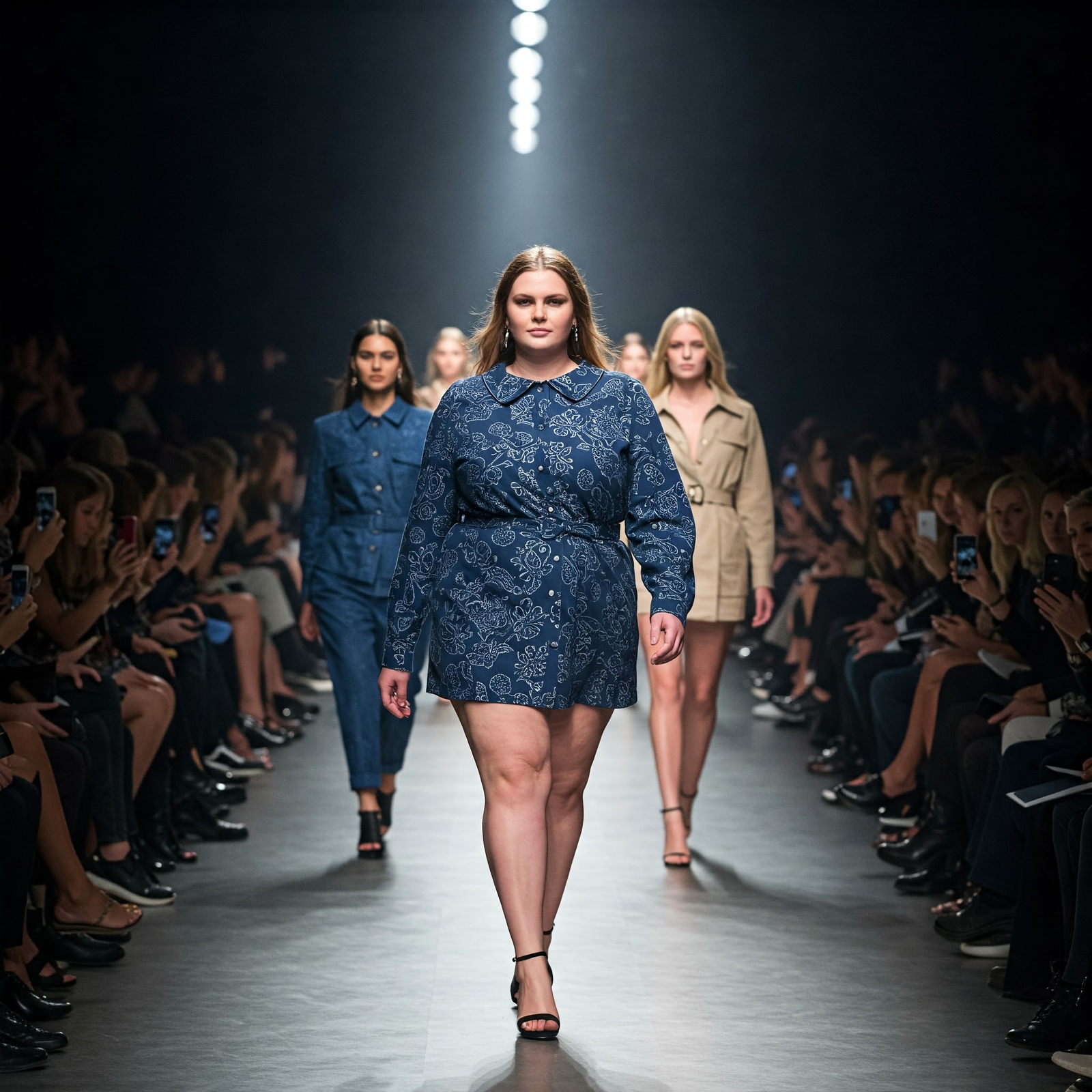Recent reports indicate a troubling decrease in the representation of mid and plus-size models during major fashion weeks, raising concerns about size inclusivity in the industry. Less than 1% of the shows featured plus-size models, highlighting the industry’s regression. This decline not only perpetuates narrow beauty standards but also alienates a large portion of consumers who seek representation. The lack of size inclusivity reflects a disconnect between fashion brands and the diverse reality of their audience, missing an opportunity to embrace true body diversity.
The Current State of Size Inclusivity in Fashion
The fashion industry’s commitment to size inclusivity appears to be waning. Recent analyses reveal a troubling decline in the representation of mid and plus-size models on the runway. For instance, during the Spring/Summer 2025 season, only 0.8% of the 8,763 looks presented across 208 shows featured plus-size models, and just 4.3% included mid-size models. This means a staggering 94.9% of the looks were designed for straight-size models.
This decline is particularly concerning given that the average American woman wears between a size 16 and 18. The disconnect between the fashion industry’s offerings and the actual demographics of consumers raises questions about the industry’s commitment to true size inclusivity.
Factors Contributing to the Decline
Several factors may be contributing to this regression in size inclusivity:
- Resurgence of Thin Ideals: There’s been a noticeable shift back towards ultra-thin beauty standards. The increasing off-label use of weight-loss drugs like Ozempic has been cited as a contributing factor to this trend.
- Economic Considerations: Some brands may perceive producing a broader range of sizes as financially burdensome, leading them to limit their size offerings.
- Lack of Representation: The underrepresentation of diverse body types in media and fashion perpetuates a cycle where non-straight-size individuals are marginalized.
The Impact on Consumers and the Industry
The retreat from size inclusivity has significant implications:
- Consumer Alienation: When consumers don’t see themselves represented, they may feel excluded, leading to decreased brand loyalty and sales.
- Mental Health Concerns: The promotion of unattainable body standards can contribute to body dissatisfaction and related mental health issues among consumers.
- Missed Market Opportunities: Brands that fail to cater to a diverse clientele overlook a substantial market segment, potentially impacting their bottom line.
Voices from the Industry
Experts and advocates have expressed concern over this trend:
“The industry’s backslide on size inclusivity is not just disappointing; it’s a disservice to the diverse consumers who seek representation.” — Emma Davidson, Dazed
Additionally, plus-size models have reported a significant decrease in work opportunities, highlighting the industry’s shifting priorities.
Steps Toward Reversing the Trend
To address this issue, the fashion industry can:
- Commit to Diverse Casting: Actively include models of all sizes in runway shows and campaigns.
- Expand Size Ranges: Offer a broader range of sizes to accommodate diverse body types.
- Promote Body Positivity: Engage in marketing that celebrates all body shapes and sizes.
- Listen to Consumers: Pay attention to feedback and adjust practices to meet the needs of a diverse clientele.
FAQ
Q: What is size inclusivity in fashion?
A: Size inclusivity refers to designing and offering clothing that caters to a wide range of body sizes, ensuring that individuals of all shapes can find fashionable and well-fitting apparel.
Q: Why is size inclusivity important in the fashion industry?
A: It promotes representation, meets the needs of a diverse consumer base, and challenges unrealistic beauty standards.
Q: How has the representation of plus-size models changed in recent years?
A: There has been a decline in the inclusion of plus-size models on runways, with recent seasons showing a significant drop in their representation.
Q: What can consumers do to support size inclusivity?
A: Support brands that prioritize diverse sizing, provide feedback to companies, and advocate for broader representation in fashion media.
Q: Are there any brands leading the way in size inclusivity?
A: Yes, some brands have committed to offering extensive size ranges and featuring diverse models, though the industry as a whole still has progress to make.
Want more inspiring content and exclusive lifestyle tips? Follow us on Instagram @nomadicbalanceblog for daily inspiration and first access to our latest guides.

